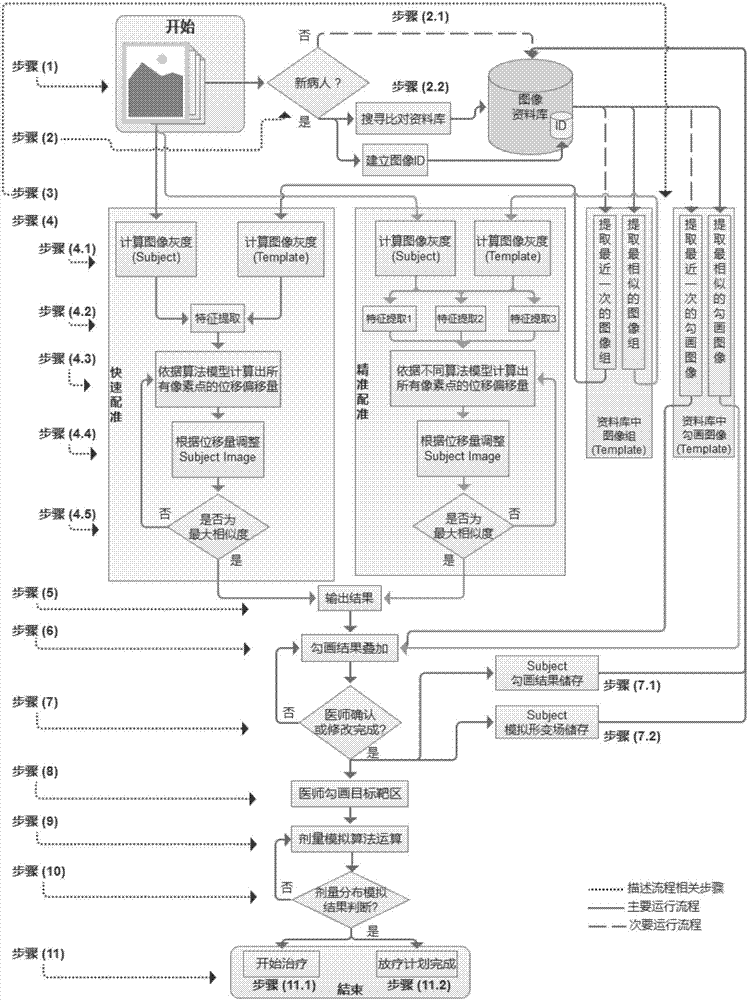Method for implementing automatic and composite radiation therapy plan
A compound and planned technology, applied in medical automated diagnosis, computing, medical data management, etc., can solve problems such as time-consuming and labor-intensive, difficult to be widely used, and unable to achieve treatment goals
- Summary
- Abstract
- Description
- Claims
- Application Information
AI Technical Summary
Problems solved by technology
Method used
Image
Examples
Embodiment 1
[0119] When an untreated tumor patient (Subject) comes to the radiation therapy department, a set of tumor localization CT images will be called out or taken for the patient first, and the doctor will read the relevant medical history and relevant examination reports. The next steps are as follows:
[0120] Step (1): Read patient data, which includes tumor images and image information of surrounding organs and tissues, including CT (Computed Tomography), cone-beam CT (Cone-Beam CT), ultrasound (Ultrasound, US), PET (PositronEmission Tomography) or Magnetic Resonance (Magnetic Resonance, MR) and other images; and information including the patient's basic data and relevant medical history;
[0121] Step (2): Based on the information in step (1), judge the patient who has not been treated, then start to extract the image structure features for the image data of the new patient, establish the image ID, and search the database based on the image ID information. The most similar se...
Embodiment 2
[0165] When a treated tumor patient (Subject) goes to the radiotherapy department for subsequent fractionated treatment, after confirming the relevant information of the patient, the follow-up steps are as follows:
[0166] Step (1): Read the image data of the patient, which contains the image information of the patient's tumor and its surrounding organs and tissues before the fractional treatment, including CT (Computed Tomography), Cone-Beam CT (Cone-Beam CT), Ultrasound (Ultrasound , US), PET (Positron Emission Tomography) or Magnetic Resonance (Magnetic Resonance, MR) and other images; and information including the patient's basic information related to medical history;
[0167] Step (2): Based on the information in step (1), it is judged as the patient who has been treated, and the image data file (Template) that is the closest to this treatment is searched;
[0168] Step (3): based on the discriminant result of step (2), extract the nearest image group and outline image ...
PUM
 Login to View More
Login to View More Abstract
Description
Claims
Application Information
 Login to View More
Login to View More - R&D
- Intellectual Property
- Life Sciences
- Materials
- Tech Scout
- Unparalleled Data Quality
- Higher Quality Content
- 60% Fewer Hallucinations
Browse by: Latest US Patents, China's latest patents, Technical Efficacy Thesaurus, Application Domain, Technology Topic, Popular Technical Reports.
© 2025 PatSnap. All rights reserved.Legal|Privacy policy|Modern Slavery Act Transparency Statement|Sitemap|About US| Contact US: help@patsnap.com



